Eid al-Adha, the Festival of Sacrifice, is a time of celebration and feasting in many Muslim communities around the world. One popular dish often prepared for this occasion is Lamb Pilaf. Lamb Pilaf, also known as lamb pulao or pilau, is a flavorful and aromatic rice dish popular in many Middle Eastern, Central Asian and South Asian cuisines. We’ve paired tender chunks of lamb with fragrant basmati rice and spices to create a harmony of flavors and textures. This dish is usually prepared on special occasions and parties due to its richness and tantalizing presentation.
When we make Lamb Patties we usually start by cooking the lamb, which is usually seasoned with a variety of spices such as cumin, coriander, cinnamon and cardamom. The lamb is then browned and sometimes slow-cooked until it becomes tender and flavorful. Sometimes we also sauté onions, garlic and ginger to add flavor to the dish. The addition of these spices enhances the overall flavor of the dish and provides a savory base for the ground lamb.
Rice is an important part of lamb biryani and long grain basmati rice is preferred because it is aromatic and stays separated and fluffy when cooked. We soak the rice before cooking to ensure even cooking and to reduce cooking time. Once the lamb is cooked, we add the rice to the pot with the water or broth and simmer the mixture until the rice absorbs the liquid and becomes tender. Other spices and seasonings may be added during this process to make the rice more flavorful.

What are the Benefits of Lamb Pilaf?
Lamb Pilaf has many benefits and is a favorite dish in many regions.One of the main advantages of Lamb Pilaf is its nutritional value. The dish is rich in protein, as lamb provides amino acids essential for muscle growth and repair. Lamb is also a good source of vitamins and minerals such as vitamin B12, iron, zinc and selenium, which are essential for maintaining overall health. The basmati rice used in lamb and rice adds carbohydrates and provides a consistent source of energy. When paired with vegetables, lamb and rice also provides dietary fiber, vitamins and antioxidants.
Another important benefit of Lamb Pilaf is that we can adjust its flavor to different dietary preferences. For example, one can adjust the concentration of spices to suit one’s personal tastes or include different vegetables depending on what is in season. In addition, Lamb Pilaf is often a staple in many households, so it is a convenient option for those who wish to cook a tasty dish without having to source hard-to-find ingredients.

Welcome To My Kitchen! Let’s Make Lamb Pilaf!
Step 1: Prepare the Lamb
In a large skillet or Dutch oven, heat vegetable oil over medium heat. Add the lamb cubes and cook, turning occasionally, until they are browned on all sides, which should take about 5-7 minutes. Once browned, remove the lamb from the skillet and set it aside.

Step 2: Sauté Onions and Aromatics
In the same skillet, add extra oil if necessary. Sauté the sliced onions until they are softened and lightly caramelized, which will take about 8-10 minutes. Then, add the minced garlic, ground cumin, ground coriander, turmeric, cinnamon, salt, and pepper. Cook for an additional 2 minutes until the spices are fragrant.

Step 3: Cook the Rice
Drain the soaked rice and mix it into the skillet with the onions and spices, ensuring the rice is well-coated. Add the browned lamb cubes back into the skillet, followed by the diced carrots, peas, and chicken or lamb broth. Bring the mixture to a boil, then lower the heat, cover, and let it simmer for 20-25 minutes, until the rice is tender and the liquid has been absorbed.

Step 4: Serve
Use a fork to fluff the pilaf, then transfer it to a serving dish. Garnish with freshly chopped cilantro or parsley before serving.

Lamb Pilaf is a dish that embodies both culinary art and health. Its rich flavor, aromatic spices, and tender lamb make it a chef-worthy dish. I hope you explore and enjoy the flavors of this dish and I am sure it will become a treasure in your kitchen as it is in mine.
Print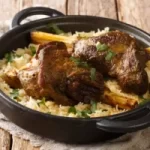
Lamb Pilaf for Eid al-Adha
5 Stars 4 Stars 3 Stars 2 Stars 1 Star
No reviews
- Author: Chef Sophia
- Total Time: 1 hour 50 minutes
- Yield: 4 servings 1x
- Diet: Low Salt
Description
Eid al-Adha, the Festival of Sacrifice, is a time of celebration and feasting in many Muslim communities around the world. One popular dish often prepared for this occasion is Lamb Pilaf. This flavorful and aromatic dish combines tender lamb with fragrant rice and spices, satisfying meal perfect for sharing with family and friends.
Ingredients
- 1½ cups basmati rice, rinsed and soaked for 30 minutes
- 500g lamb shoulder, cubed
- 2 onions, thinly sliced
- 4 cloves garlic, minced
- 2 carrots, diced
- ½ cup peas
- 2 tablespoons vegetable oil
- 1 teaspoon ground cumin
- 1 teaspoon ground coriander
- ½ teaspoon turmeric powder
- ½ teaspoon cinnamon
- Salt and pepper to taste
- 3 cups chicken or lamb broth
- Chopped fresh cilantro or parsley for garnish
Instructions
Step 1: Prepare the Lamb
- Heat vegetable oil in a large skillet or Dutch oven over medium heat. Add the lamb cubes and cook until browned on all sides, about 5-7 minutes. Remove the lamb from the skillet and set aside.
Step 2: Sauté Onions and Aromatics
- In the same skillet, add a bit more oil if needed. Add the sliced onions and cook until softened and lightly caramelized, about 8-10 minutes.
- Add minced garlic, ground cumin, ground coriander, turmeric, cinnamon, salt, and pepper. Cook for another 2 minutes until fragrant.
Step 3: Cook the Rice
- Drain the soaked rice and add it to the skillet with the onions and spices. Stir well to coat the rice with the spices.
- Return the browned lamb cubes to the skillet. Add diced carrots, peas, and chicken or lamb broth. Bring to a boil, then reduce the heat to low, cover, and simmer for 20-25 minutes, or until the rice is cooked and the liquid is absorbed.
Step 4: Serve
- Fluff the pilaf with a fork and transfer it to a serving dish. Garnish with chopped fresh cilantro or parsley before serving.
Equipment

SENSARTE Nonstick Ceramic Frying Pan Skillet
Buy Now →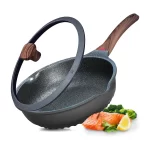
Vinchef Nonstick Deep Frying Pan Skillet with Lid
Buy Now →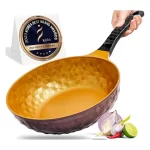
Diamond X Premium Extreme Non Stick 11″ Frying Wok Pan Hybrid
Buy Now →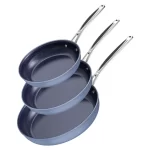
Nuwave 3-Piece 8”, 10”, 12” Forged Lightweight Frying Pan Set
Buy Now →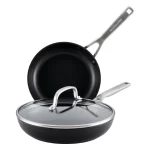
KitchenAid Hard Anodized Induction Nonstick Frying Pans
Buy Now →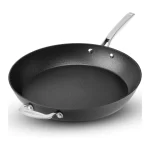
Granitestone 14 Inch Family Size Nonstick Frying Pan
Buy Now →Notes
- For extra flavor, you can add a pinch of saffron threads soaked in a tablespoon of warm water to the pilaf before cooking.
- Feel free to customize the vegetables in this dish based on your preferences. You can add bell peppers, green beans, or tomatoes for variation.
- Leftover lamb pilaf can be stored in an airtight container in the refrigerator for up to 3 days. Reheat in the microwave or on the stovetop before serving.
- Prep Time: 20 minutes
- Cook Time: 1 hour 30 minutes
- Category: OCCASION
-
How do I ensure the lamb is tender and not tough?
Choose high-quality lamb and ensure it is cut into evenly sized cubes. Brown the lamb properly and consider slow-cooking it until tender before adding it to the rice.
-
How can I prevent the rice from becoming mushy or undercooked?
Use basmati rice and soak it before cooking. Measure the liquid carefully and follow the recommended simmering time. Avoid stirring the rice too much during cooking to maintain its texture.
-
What should I do if the pilaf lacks flavor or depth?
Ensure you use fresh spices and sauté them with the onions until fragrant. Adjust seasoning to taste, adding salt and pepper as needed. You can also use a rich broth instead of water to enhance the flavor.


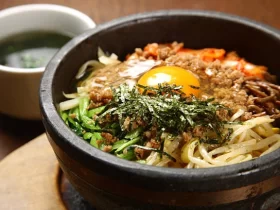

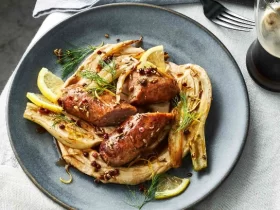
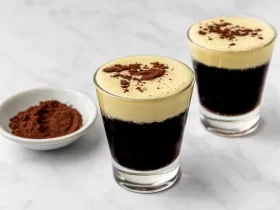
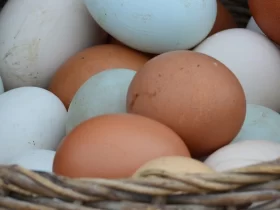
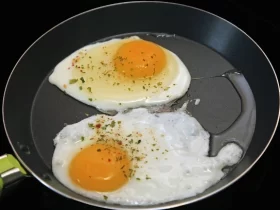
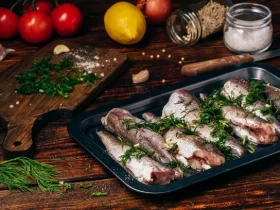
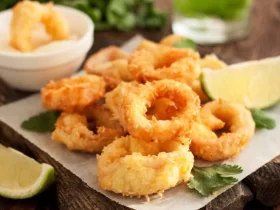




Lamb Pilaf is my idea of an iconic Eid dish, and every bite of it brings out the warmth and happiness of the holiday.
Granitestone 14 Inch Family Size Nonstick Frying Pan This skillet is so good and recommended!!!!
Wow, just looking at this Lamb Pilaf makes your mouth water! Make sure you learn how to make it for your family to feast on during Eid.
SENSARTE Nonstick Ceramic Frying Pan SkilletThe best looking skillet I’ve ever bought, buy it if you’re looking for a good look~~